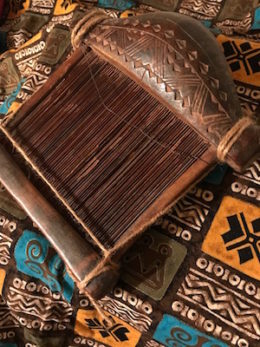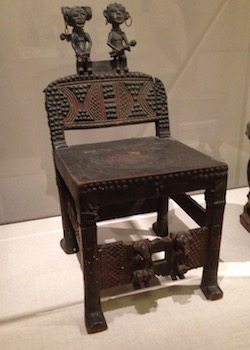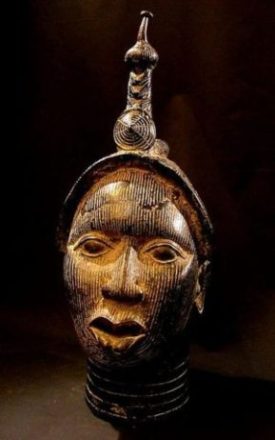This is part 2 of a 2 part series regarding the world’s African roots.
• Anchoring: a concept in behavioral economics, which states that people often make decisions based on their perceptions and feelings in addition to (and sometimes instead of) facts.
African roots provided a comprehensive and contiguous time line of human development going back at least 7 million years.
The story continues.
Last time in part 1, I discussed the inadvertent gifts that African culture bestowed on world culture and civilization.
I ended the post with this question:
Can one really build knowledge upon knowledge when it is based on a series of untruths? Can one be a critical thinker and at the same time accept a recorded “history” not jiving with real, true history?
Ok, that’s two questions. Let’s see if we can find the answers.
The bottom falls out
There are many concepts but psychological profiling, capitalism, dueling economic theories, darwinism, racism, misogyny, and the gold standard have been used the most.
These concepts did not prevent wars, depression, starvation, genocide, massacres, and global stress from occurring. Much of the time they were the cause.
Once used to keep the rest of civilization in submission, they proved to be ineffective and baseless. In fact, the rules never existed in truth and were never real.
In the same period, disinterest and resistance to the ideas and solutions that Africa and its descendants could have contributed resulted in a devastating loss for the entire world. The loss reverberates… still.
Incorporating African roots
Concepts in mathematics, including the golden ratio, golden rectangle, and fractal geometry define African life. How can it not?
Much of it comes from women and men observing every natural phenomenon on that divine landscape and using the results in everyday life.

Anchor that in your mind. People of a 7 million-year-old legacy, who obtained sustenance from, maintained, and respected that same land, cannot help but observe patterns — in all things. These observations were used to determine the rhythm of life in Africa. It is not a primitive Africa, as we have been taught to believe, but a mathematically sophisticated one.
The development of village structure closely follows geometric and cosmic observation and calculation. This is present in the arts, textiles, spirituality, mathematics, engineering, and… hair braiding.
Golden smolders
Evidence points to Africa as the place of origin for these concepts before they were ushered off the continent, laundered and claimed by non-Africans.
Those actions indicated the raiders’ recognition of the brilliance of the land’s inhabitants… African gold in the flesh.

Geomancy, an adaptation of ancient African divination, is the basis for the binary code in modern computing. That is just one effect of the brilliance of the “primitive” African mind.
Great walled cities, monumental stone circles dedicated to astronomy, obelisks, and funereal structures for the dead including kings and queens point to a great collective ancient intellect.
This divine place where people were minding their own business evoked visceral, inhuman reactions by the raiders of humanity. They utterly destroyed life as it was known. The looting, pillaging, burning, kidnapping and finally enslavement that took place on such an incalculable scale has not been repeated since.
Now, these raiders have their terra nullius, a no man’s land of their own creation. It is the smoldering and bloodstained heap of ashes on a land that they occupy as new Africans.
What happened can never be properly described. But it must be recorded.
The Diaspora
African people served, albeit involuntarily, as a source of financial, corporeal and intellectual “funding” for the world. There has been no purposeful gain or appreciable return on their “investment”. We cannot deny now that the universe is unveiling for what and how much those mortal wages shall be.
The current story of civilization is incomplete, irrelevant, and irredeemable. That is the story which provided the framework for all of the accepted theories, concepts, and that coveted good education full of redactions. The result is the confusion we are witnessing in the world today.
Everyday more information is unveiled and used to fill in the lies blanks that enabled the concealment or blacking out of the world’s African roots.
People of the diaspora have often walked in this “modern” world without any light. Using all of our senses, we navigate the world as our ancestors did on that divine landscape.
Hated and loved, the children of those original souls are found on every continent, island, and burial ground^ on this planet. Their DNA lives on.
Effect on My Woodworking
Mimi ni seremala, wewe ni seremala, kada na dada yangu ni seremala kama mwana na binti zao.
I am a woodworker. You are a woodworker. My brothers and sisters are woodworkers as are their sons and daughters.
My appreciation for tools, woodworking thought, theory, and concepts began when I realized this about the manual arts: they build and sustain civilization. Yet, in many cultures craftsmen and craftswomen – masters of their art – do not benefit from their output while alive. Any manner of posthumous accolades is the standard. Others, who had no hand in the process of creation but instead have possession, benefit greatly.
It is just another result of the -isms at work. In this case it was the confiscation and theft of many treasures and works from their creators through horrible acts and, when necessary, ad hoc “legal” means.
I am especially interested in the architecture, design, and construction techniques of ancient Egypt, Greece, Rome, and the Islamic world and their obvious kinship to those of Africa.
Connecting this further, I believe that the undebatable demands for repatriation of cultural heritage items to their countries of origin must be fulfilled.
Then the study, research, teaching, and respect for African workmanship can evolve as it has for other venerated cultures. And once again the creators’ descendants can choose the quality, quantity, and beneficial disposition of the output.
They’re ready.
I’m ready, too

wood, leather, metal, tacks, nails, and trade beads, Detroit Institute of Arts.
While on my path, I remain grateful for the gift of resources entrusted to me.
My search for information at woodworking blogs, websites and books confirms the commonalities of the tektōn, seremala, compagnon* or simply, woodworkers.
Of course, I recognize the importance of the concepts and theories in the development of my woodworking skills. But differences regarding method, thinking and approach open the door to change.
Walking through that door, I release the constraints of conventional thinking.
That freedom informs my work and the implementation of my ideas regardless of the “rules”. I definitely savor my conspicuous presence as a black woman hobbyist woodworker.
The unassailable legacy of African roots in the woodworking arts since before colonial times through the period of slavery – to this day – reassures me that I am right where I should be.
Working apart together
The mere mention of black woodworkers in woodworking magazine articles evokes visceral, inhuman reactions from readers – other woodworkers – regarding our expertise and “qualifications” for that seat at the table.
Woodworking forums have shut down due to colossal, explicitly disdainful and angry comments and demands.
Sadly, the tactics have altered the journalistic tone of some woodworking magazines and websites. In others, the result is complete suppression of subsequent features and discussions.
Perhaps ignorance is the reason for these destructive reactions. I don’t know and couldn’t say. Well, maybe I just did.
The resulting environment, at times, is hostile and unwelcoming. It taints the people, places, magazines, and things I do like about woodworking.
Honestly, I’ve always been on the periphery. Totally aware of the truth and realities that I meet each day, I am compelled to make my own path and, sometimes, the door. When I need to, I go find my people…
… because, these are not my people.
I am in pursuit, not of perfection, but of excellence – ubora. I pray that I am enabled everyday to do my very best work.
With much respect to those who came before me, my intention is to approach, enter, and leave the arena better than I found it. I do this everyday regardless of the storms circling any wood bench, table, or woodworking forum.
Unearthing a legacy of greatness
This series came about when I was doing a little research about the golden ratio. It confirmed that a kinship among the golden rectangle, geomancy, and my ancestors does indeed exist. For me, it was an inadvertent discovery.
While reading, questioning, and searching for more answers, I found seekers who are also unveiling the truth. These people, in different fields of study, are just as curious about the trace descent of African thought, the Fibonacci series, mathematics, and design. And they are saying it out loud.**
History cannot and won’t change. It can be unearthed, however, then added to the history and her-story currently being made. Only then can those blanks and redactions be filled.
• Create the stories. • Record them. • Talk about them.
• Be the truth •
That is the first and best step toward having a clear history that is true and archivable. Now, it cannot be unread, unseen, or unheard.
Φ Shirley J
———-
This is the end of part 2: African Roots – Anchoring. Click here for part 1: African Roots – Absorption.
Let me know what impact the series made on you.
Thanks and baadaye.
_________
*tektōn, seremala, compagnon: woodworker/carpenter (Greek, Swahili, French)
_________
For further reading about African influence in design at:
**African Roots of Swiss Design; Audrey G. Bennet, author; Read full article at the Conversation
also,
• Ron Eglash, African Fractals
^ for more insight in the U.S., When Black History Is Unearthed, Who Gets to Speak for the Dead?, Jill LePore, author; Read full article at The New Yorker.
more on fractals: How Black Hair Care Practices Can Inspire Architecture, Yes!Magazine, by Irene Vásquez, February 28, 2023


4 thoughts on “● African Roots – Anchoring”
Shirley, another thorough and beautifully crafted article. At once somber and joyful, it presents fact and celebrates accomplishment. We are lucky to have you savoring and sharing your uniqueness and talent as a woodworker. Thank you.
Thank you, Natalie, for appreciating that everything is connected.
S🌹
Very good work, we are never too old to learn new things.
Yes! It is never too late. We are never too old. And never too kind. Thank you so much for reading!